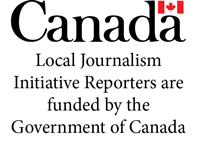Not so very long ago, home ownership was an achievable dream for the average Canadian.
It might not be a palace in an exclusive neighbourhood, or even a sweet little cottage. Instead of the flowers in the vase and the two cats in the yard that Crosby, Stills, Nash and Young sang about in “Our House,” there might be a partly dismantled snowmobile in the front yard, surrounded by dogs of undetermined ancestry, but it was home, part of the Canadian dream.
At a time when even a modest house in an as-yet ungentrified neighbourhood runs half a million dollars or more, the dream of home ownership has faded for a lot of us. Now the dream is of an apartment with affordable rent and a place to park the gas-guzzler – and parked it will remain, given the cost of gasoline and everything else.
That includes taxes. Municipalities are hashing out the final details on this year’s tax increase – a given, considering the skyrocketing costs of repairing and replacing roads, bridges and other infrastructure.
There will be pay raises, of course, except for those on fixed incomes. The big question is whether raises will keep up with costs. Some people will come out ahead, but many will not. Most raises are based on a percentage, meaning a two per cent increase amounts to something far different to a person earning a Sunshine List income than it does to someone barely getting by on minimum wage.
The fact is, there are a lot of wealthy people in this country; those $500,000 houses are being snapped up as fast as builders can erect them.
At the same time, there is a growing number of people living in their cars, derelict buildings and homeless shelters
There is an old saying, that you can get away with subjecting people to all kinds of abuses, but do not take away something they have. Canadians of even modest means have always had the hope of owning a house and car, of being able to provide their kids with an education and saving enough to live decently in retirement. That dream did not require a lottery win to fund; it was real. Only some achieved the dream, but even the many who did not, knew it was within their reach.
As the gap between rich and poor grows wider by the day, and more people are tumbling into it, there is the realization in some circles that the Canada they thought they lived in no longer exists.
That realization is playing out in all kinds of protests and expressions of frustration and anger that include honking transport truck air horns for three weeks in our national capital.
COVID, the focal point for much of the anger, has acted like a lit match, but make no mistake, the pile of dry kindling was there and ready to explode into flames before the pandemic hit.
As this country gears up for a provincial election, no political party, leader or candidate can afford to ignore voters who have been expressing the fact they feel disenfranchised. They might not make big campaign donations or live in the same neighbourhood as the person hoping to represent them, but they will be active in the election, of that we can be certain.
The time is past overdue for listening to all voters, both those who have managed to transition to the great Canadian dream, version 2022, and the ones who need a helping hand getting there.
The Canadian dream may be changing but it can be very good for the vast majority of us. Canada is still a country with tremendous potential, rich in resources both natural and human.
For people to be willing to work hard and strive for better, they must have some hope of being able to achieve their dreams. That means the gap between the very wealthy and those who are homeless and destitute has to narrow. People on both sides of the gap must feel those they elect represent them.



